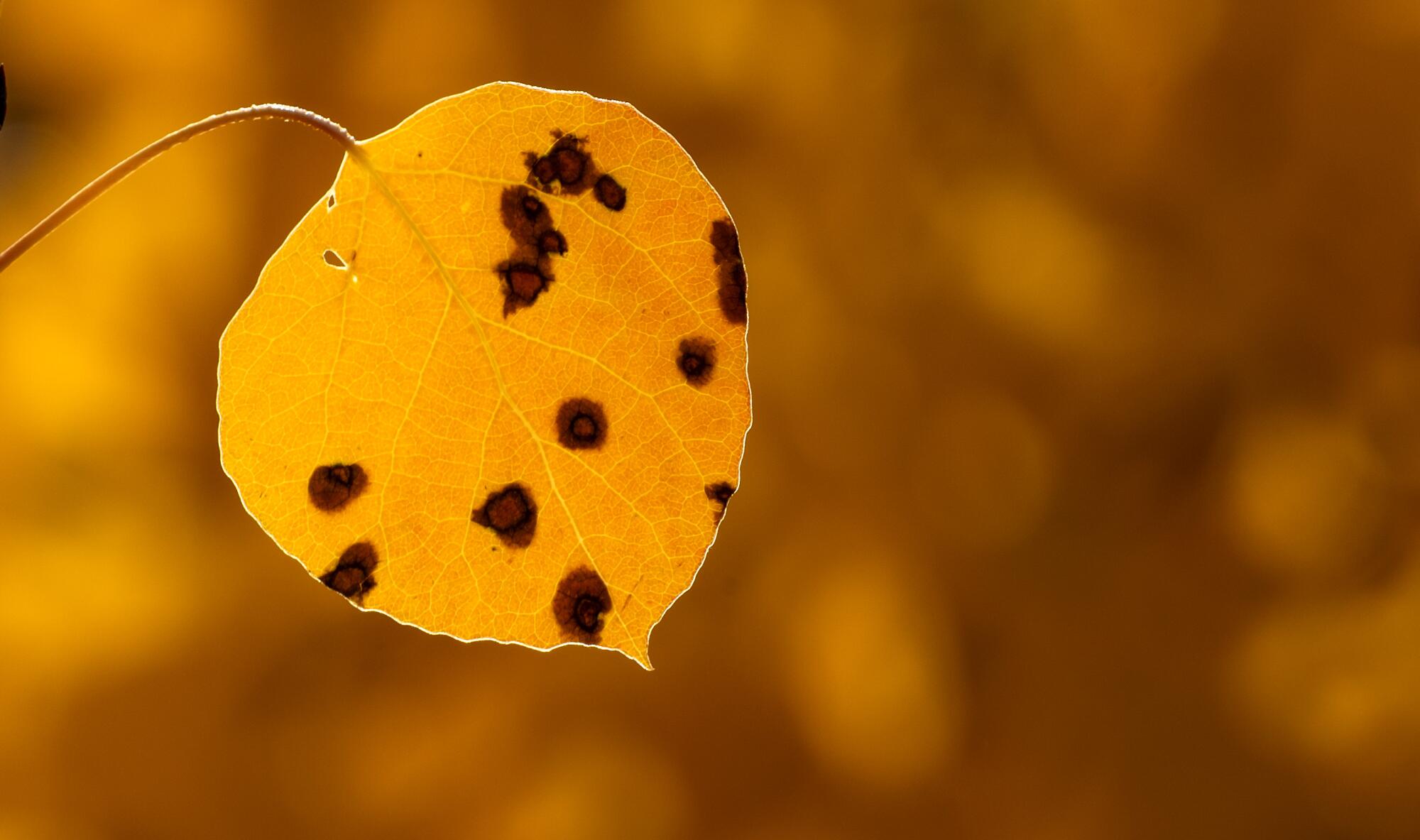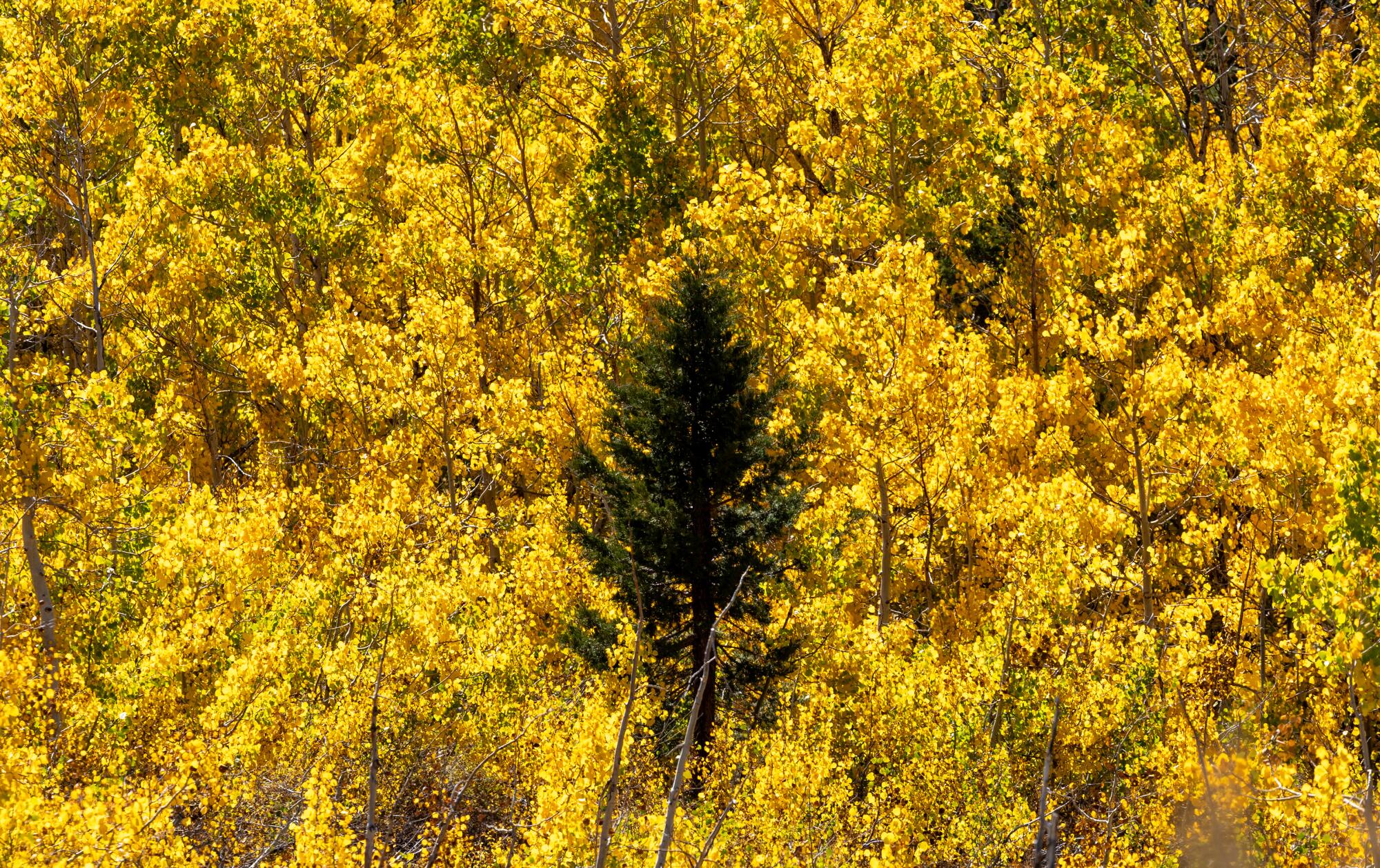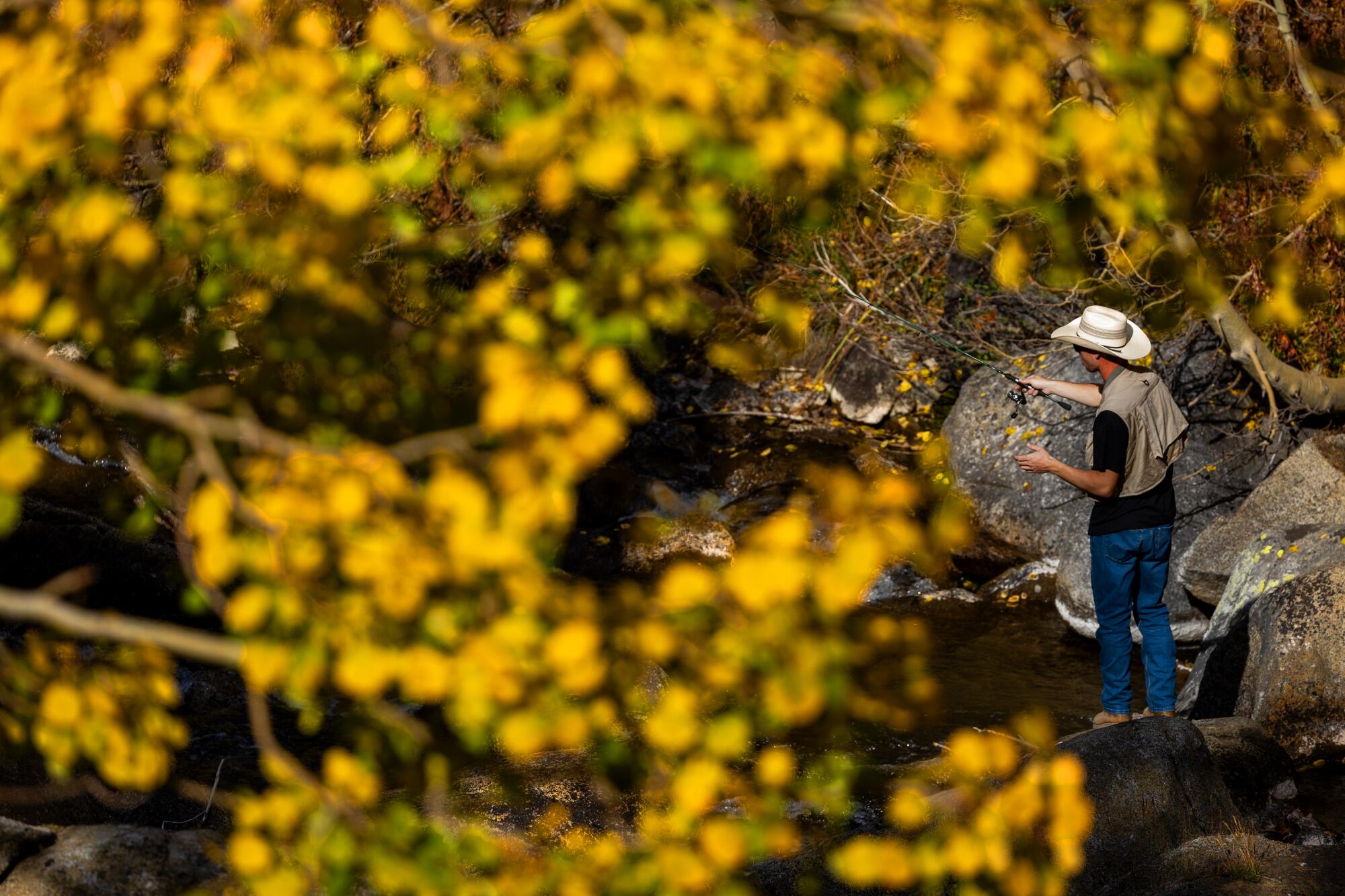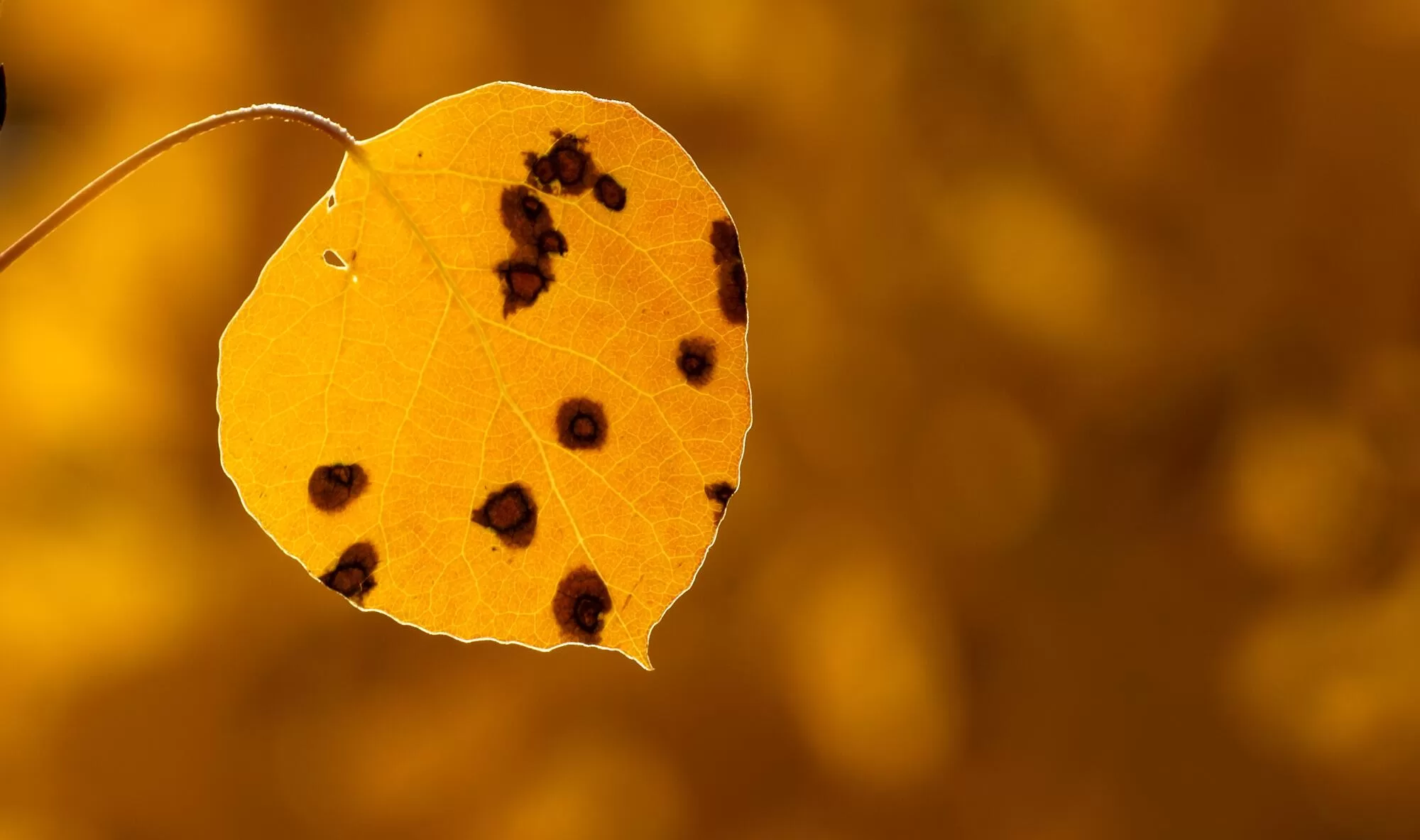Just after dawn on Thursday, I pointed my car up a long, steep hill outside Bishop and climbed through the high desert scrub toward the towering peaks of the Eastern Sierra. For about 15 miles, the land and most everything on it was the same color: a muted sandy gray.
But at about 8,000-feet elevation, I rounded a curve on South Lake Road, and the world in front of my windshield exploded in blazing yellow and gold.
At that altitude, groves of aspen and willow trees were radiant with fall color, filling creek beds and high mountain slopes with a riot of glorious hues seen once a year here and only for a week or so.

The autumn leaf change is hitting its peak in the Inyo National Forest near Bishop.
The colors in the Eastern Sierra peak first at high elevations, and the spectacle works its way downhill as autumn progresses. That means there’s still time to catch the show at lower elevations. South Lake Tahoe and Convict Lake, near Mammoth, look promising this week.
In Southern California, the leaves around Mt. Baldy and Big Bear Lake usually reach their peak between mid-October and early November.
A reliable guide with maps and suggested viewing spots can be found at California Fall Color.
Leaf snobs are quick to note that the West Coast doesn’t have anything approaching the variety of colors that appear this time of year in New England. And they’re right. I still remember a drive from Montreal to Connecticut one October weekend many years back, watching my otherwise chatty college roommate, who had grown up in British Columbia, stare out the passenger window in stunned silence as we rolled past hillsides covered in blazing hues of red, orange and yellow.
But those were just hills; the highest peak in Vermont is a touch over 4,000 feet. While the Eastern U.S. offers a resplendent fall palette, the staggering scale and grandeur of the Sierra Nevada make for their own breathtaking annual spectacle.

The scale and grandeur of the Sierra Nevada make for a breathtaking autumn leaf spectacle.
The road I took up from Bishop ends at 9,868 feet, at South Lake, which serves as the bottom of a natural amphitheater surrounded on three sides by soaring granite summits: Hurd Peak at 12,237 feet; Cloudripper at 13,535 ft; and Mt. Agassiz at 13,899.
Together they form one of the most jaw-dropping vistas you can reach by car in California.
Climbing those formidable peaks should be left to people with technical mountaineering skills, as was proven once again last month when the Inyo County Sheriff’s Department had to rescue three under-equipped and ill-prepared hikers from Cloudripper. It took the search-and-rescue team more than five hours to climb up to the stranded group with ropes and harnesses and another 6½ hours to get them safely down.
But for visitors who just want to take in the dazzling foliage, Bishop Pass offers a well-maintained and easily accessible hiking trail. It starts at South Lake and winds for nearly six miles along a string of pristine alpine lakes, ending on a 12,000-foot ridge that marks the boundary between the eastern and western slopes of the Sierra.

A fisherman casts his line into Bishop Creek near South Lake in the Inyo National Forest.
I set out to do about half the distance as a 10k trail run, but stopped so frequently to take photos of the magnificent landscape and to chat with fellow foliage gawkers that the workout I expected to take just under an hour turned into a 2½ hour stroll.
Along the way, I met retirees from Bakersfield and Thousand Oaks, techies from the Bay Area and a couple in their 60s from Japan. Apparently, word of the autumn majesty in this remote mountain paradise has spread far and wide.
If you go: The drive to Bishop from downtown Los Angeles is about 270 miles and generally takes about five hours. From there, it’s another 20 miles up the hill to South Lake, where the Bishop Pass Trail begins. Temperatures at that altitude range from the low 60s in the afternoon to the low 40s at night this time of year, so pack a few layers, along with water and snacks for the trail.
